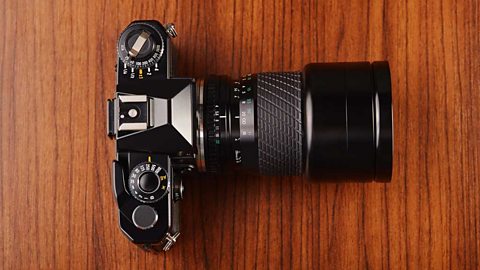Traditional photography
Traditional photography is also called analogue photography. Images are captured on photographic film using a camera.
Creating an image with analogue photography has three stages:
- The film is made up of layers of light-sensitive chemicals coated on a flexible base (the film). The film is exposed to light in a camera to create a negativeA photographic image where the tones are reversed - so dark is light and light is dark image.
- The film is 'developed' using chemicals. Prints are made by projecting the image from the film onto light-sensitive paper which is then put into a series of chemical baths.
- The processing of both film and paper must take place in darkened rooms (a ÔÇÿdarkroomÔÇÖ) to avoid light damaging the materials.
Types of traditional camera
There are many different types of traditional analogue cameras.
Click through the slideshow to see different types of analogue camera:

Image caption, SLR camera (single-lens reflex)
Image caption, Twin-lens reflex camera
Image caption, Box Brownie camera
1 of 3
End of image gallery
Black and white photographic printing
When developing black and white photographic prints it is important to follow darkroom health and safety:
- wear protective clothing such as aprons, goggles and gloves
- don't take food and drink into the darkroom
- clean up any spills
- do not cross-contaminateTo mix things that should not be mixed the chemicals
- use tongs to move the print between the chemical baths
- hold the photograph upright to let the chemicals run off before moving to the next tray
- donÔÇÖt shake the photograph
- hands must be washed when finished